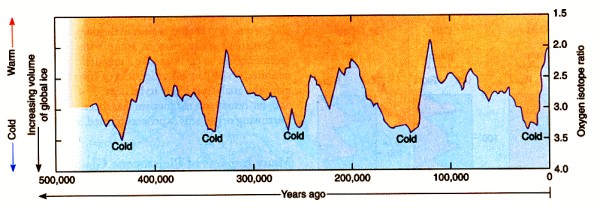I went to see the Al Gore movie, An Inconvenient Truth. It’s a very interesting movie and I hope lots of folks will go to see it. I could do with a little less footage of Al Gore riding in cars and walking through airports and more science, but it’s still important to see.
But this isn’t a movie review. It’s a discussion of the central thesis of the movie: the earth is heating up due to human activity and the consequences are dire. I couldn’t quite get that conclusion from the facts I have.
The movie presents many facts and draws conclusions. I want to separate out what is fact from what I have questions about.
Fact List:
- Carbon dioxide is a greenhouse gas. That means that CO2 tends to allow light through, but not heat. That’s a little like when you leave your car windows up on a sunny day. The light streams in through the windows, but the heat doesn’t radiate out through glass as well.
- There is twice as much CO2 in the atmosphere than there has been at any time in the last 600,000 years. We know this because there are ice core samples taken in the Antarctic. Ice is deposited in recognizable annual layers, and scientists can measure the CO2 in the various layers.
- There is a strong correlation between the amount of CO2 in the atmosphere and the global temperature. The global temperature can be inferred through the ratio of two isotopes of Oxygen in the ice cores. One can see by looking at a time-series chart that CO2 in the atmosphere tracks temperature.
- The earth is getting warmer and ice is melting. I’ll talk more about that below.
Ok, that’s it for facts from the movie. Now for some analysis.
The earth is getting warmer. I borrowed my kid’s college geology book. It has a nice chart based on core samples from the Indian Ocean, showing the temperature pver 500,000 years inferred from Oxygen isotope ratios.

Image from The Earth Through Time Eighth Edition by Harold Levin, John Wiley & Sons Publishers, 2006.
There is a clear pattern of ice ages every 100,000 years or so. You remember ice ages? Huge areas of North America all covered with ice? Well that ice is melting. It’s been melting for ten thousand years. In fact, after every ice age (see chart), there follows a relatively rapid temperature rise. If you look at today’s high temperatures, it looks pretty much like 130,000 years ago. Now here’s the interesting part: after the last ice age, it got a bit hotter than it is today!
So here’s one place where the CO2 / temperature correlation breaks down. There’s twice as much CO2 in the atmosphere today than 130,000 years ago, but it was a bit hotter then.
Let’s focus on that CO2 for a minute. It sounds reasonable that the unprecedented amount of CO2 in the atmosphere today comes from human activity. That makes sense. We certainly put lots of CO2 there. But where did CO2 variation in the atmosphere come from during the previous ice age / warming cycles?
Geologists have no complete explanation for prior ice ages and warming although many things are possible contributors with a front runner being the earth’s tilt and wobble. CO2 in the atmosphere might be a factor, but CO2 in the atmosphere might cause cloud cover that reflects heat. Isn’t it as likely or even more likely that the ice age / warming cycles were the cause of the CO2 in the atmosphere, rather than the other way round? This is one question the movie doesn’t touch. There may be a perfectly good answer, but I don’t know what it is. You can also note that CO2 in the atmosphere correlates with the seasons, but they don’t cause them.
Based on the historical ice age / warming we would expect it to be hot now. Last time around, it was hotter than it is now. No reason to think it won’t get even hotter this time. The movie show graphically that the ice continues to melt. Whether the oceans rise 17 feet or 20 feet doesn’t make all that much difference. It looks like global flooding is very plausible.
The greenhouse gasses we’re putting in the air certainly are not helping and very likely hurting: what I don’t know is how much. And I don’t know whether any amount of CO2 emissions reduction (even down to 130,000 BC levels!) will prevent a very real possibility of averting catastrophe. It happened before.
So what is one to do?
The movie suggests: recycling, replacing incandescent with fluorescent lights, insulating your home, using clock thermostats. Well DUH! What idiot isn’t already doing all of that?
If anyone would like to clue me in to why geological levels of CO2 in the atmosphere independent of clinate, please comment. If anyone would point to a model that indicates that reducing CO2 in the atmosphere back to 130,000 BC levels (or 1974 levels as Al Gore mentions) will stop all the melting, please do.
